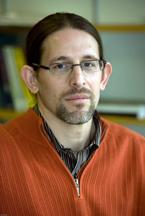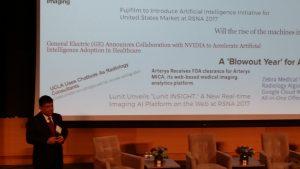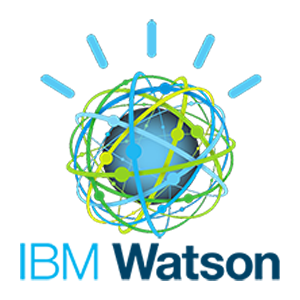Can Digital Innovation Transform Health Care? Part I
 Imagine this: a city homeless shelter serves breakfast and dinner, but not lunch. Hungry residents regularly go to the fire station next door, complain of chest pain, get taken by ambulance to the hospital ER where they are evaluated, at high cost, given lunch, and then transported back to the homeless shelter in time for dinner.
Imagine this: a city homeless shelter serves breakfast and dinner, but not lunch. Hungry residents regularly go to the fire station next door, complain of chest pain, get taken by ambulance to the hospital ER where they are evaluated, at high cost, given lunch, and then transported back to the homeless shelter in time for dinner.
Such was a scenario laid out recently at the MIT Sloan School as an example from an inefficient US social and health care system that cannot adequately keep track of patients, manage health of the poor, or control costs.
 The scenario was described by Jason Helgerson, Medicaid Director for the New York State Health Department, at a day-long conference entitled “Health Systems Innovation.” At the November 29 conference, experts from industry, government, science, medicine and academe laid out some of US health care’s daunting problems, along with new visions and hoped-for solutions —many powered by digital innovation.
The scenario was described by Jason Helgerson, Medicaid Director for the New York State Health Department, at a day-long conference entitled “Health Systems Innovation.” At the November 29 conference, experts from industry, government, science, medicine and academe laid out some of US health care’s daunting problems, along with new visions and hoped-for solutions —many powered by digital innovation.
 In introducing the sessions, which were organized by the MIT Sloan Initiative for Health Systems Innovation (HSI), moderator Jay Levine pointed out that, today, there is more uncertainty regarding health care than at any time since the enactment of Medicare in 1965—a result of “overwhelming” political turbulence and concerns about health insurance and a tax plan that could upend the health industry and lead to huge, unsustainable losses in health delivery. Levine is retired principal of ECG Management Consultants, Inc.
In introducing the sessions, which were organized by the MIT Sloan Initiative for Health Systems Innovation (HSI), moderator Jay Levine pointed out that, today, there is more uncertainty regarding health care than at any time since the enactment of Medicare in 1965—a result of “overwhelming” political turbulence and concerns about health insurance and a tax plan that could upend the health industry and lead to huge, unsustainable losses in health delivery. Levine is retired principal of ECG Management Consultants, Inc.
 Retzef Levi, an MIT/Sloan management professor whose department hosts HSI, outlined burgeoning health issues that accompany an aging US population. He emphasized the need to “sow seeds now” for a “visionary, futuristic system” to prevent disease and know who is at risk in order to reduce future illness.
Retzef Levi, an MIT/Sloan management professor whose department hosts HSI, outlined burgeoning health issues that accompany an aging US population. He emphasized the need to “sow seeds now” for a “visionary, futuristic system” to prevent disease and know who is at risk in order to reduce future illness.
Such a system would integrate local, state, and national systems, medical and behavioral disciplines, primary, specialty and community care, Retsef said. Providers would be paid for performance rather than tasks undertaken. There would be a workforce sufficient to handle the nation’s long term care needs, personalize diagnosis and treatment. The system would make full use of digital health innovations such as big data, analytics, sophisticated devices and mobile apps without losing the best aspects of human care.
After Levi’s remarks, Levine asked, “ in light of huge current losses in the system, where does the money come from to fix it?”
Panelists at the day long meeting never fully answered that question, but they did lay out a variety of promising digital approaches that could lead toward transformation, as well as roadblocks to change.
Analytics, machine learning and artificial intelligence
In a panel on “Machine Learning in surgery and cancer”, MIT PhD Candidates Jack Dunn and Daisy Zhou described analytic tools, based largely on longitudinal patient records, that they are developing to predict how long an individual surgical patient is likely to live, with what quality of life, if certain decisions are made. Such tools, which evaluate “nuanced “ signals and make use of “decision trees,” are aimed at helping doctors decide on treatment plans. Under current treatment guidelines, Zhou said, many doctors tend to “overestimate” prognoses, which can diminish patients’ quality of life and increase medical costs.
 Dusty Mojumdar, PhD, IBM vice president and chief marketing officer for an IBM artificial intelligence (AI) system that reads, learns, understands and interacts with humans. Named “Watson,” after IBM’s first president, Thomas Watson, the system is now used, in health care, to: combat a major shortage of radiologists; predict whether nodules on individuals’ lungs will become malignant; develop new targets for ALS drugs, predict hypoglycemic events for diabetics; rank treatment plans and options for seven cancers, and match patients to clinical trials.
Dusty Mojumdar, PhD, IBM vice president and chief marketing officer for an IBM artificial intelligence (AI) system that reads, learns, understands and interacts with humans. Named “Watson,” after IBM’s first president, Thomas Watson, the system is now used, in health care, to: combat a major shortage of radiologists; predict whether nodules on individuals’ lungs will become malignant; develop new targets for ALS drugs, predict hypoglycemic events for diabetics; rank treatment plans and options for seven cancers, and match patients to clinical trials.
Artificial intelligence is also being used to evaluate what one speaker termed an “explosion “of health data—which is reported in some 7000 new health care publications per day, and which doubles every 73 days, according to Mojumdar. Several massive health systems are employing artificial intelligence to co-ordinate electronic medical records—using “text analysis” and “pattern matching” to “catalog” patients with similar health conditions in order to evaluate and predict outcomes of particular treatments.
In September, IBM made a 10-year, $240 million investment to create the MIT–IBM Watson AI Lab to carry out fundamental AI research aimed at propelling scientific breakthroughs that unlock the potential of AI.
In Part II, I’ll share panelists’ information about a variety of digital devices and methods already in use to help streamline and personalize long-term care and health care delivery.
LINKS TO:
Part I Overview, Watson, analytics
Part II digital devices, long term care.
Part III Apps, devices, roadblocks
Videotapes and photos of the conference, held November 29, 2017, are available at http://mitsloan.mit.edu/alumni/events/2017-cambridge-health-conference/
–Anita M. Harris
Anita Harris is a writer and communications consultant specializing in health, science and technology.
New Cambridge Observer is a publication of the Harris Communications Group, a content, PR and digital marketing firm based in Cambridge, MA.